This Round the Kitchen Table gathering is in the heart of the Burren, at the home of Michael and Liz Davoren. Records show the family can trace their roots in the townland of Kilcorney back to the 14th century. They are happy their son Gregory, is the latest generation of the family to farm on the Burren.
As an only son, Michael was destined to go farming and after doing his Junior Cert that’s what he did. Theirs was a dairy and suckler farm but with limited green land his mother got out of dairying. “We had 20 suckler cows and they provided a good income. Their calves were reared to as near finishing as possible and sold as forward stores.”
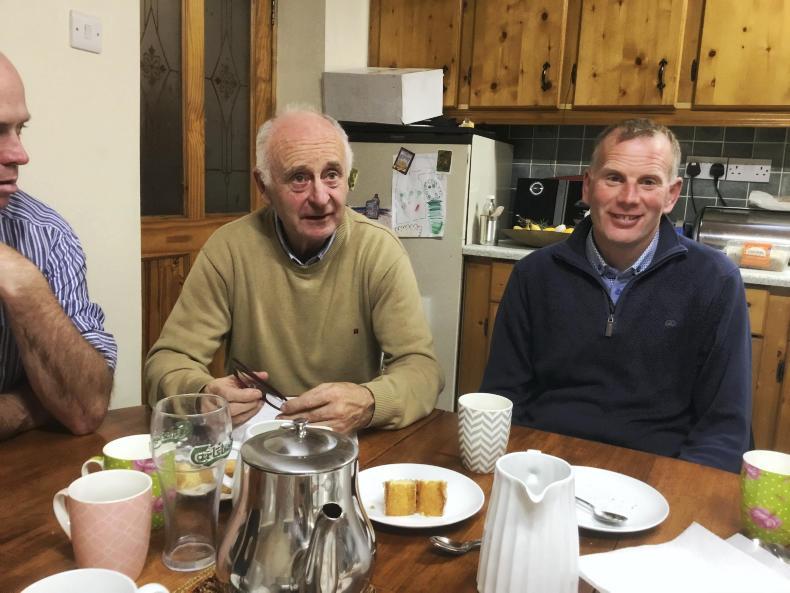
Michael Davoren and Michael Collins.
When Michael began farming he took on board the best scientific advice of the time. “I bought into the mantra of one more cow to the acre. I bulldozed land and reseeded green land to follow best practice. We got out of sheep and concentrated on sucklers and the premiums kept it all going. But what we did in following all that advice was wrong for the Burren.”
Winterage works for dairying
Michael J Moroney is a native of Kilfenora and is married to Aisling and they have two children Caoimhe and Darragh. He’s a dairy farmer with 90 cows and supplies milk to Kerry. He finishes beef from the dairy herd and has winterage (cattle moved from one grazing ground to another seasonally) on the Burren.
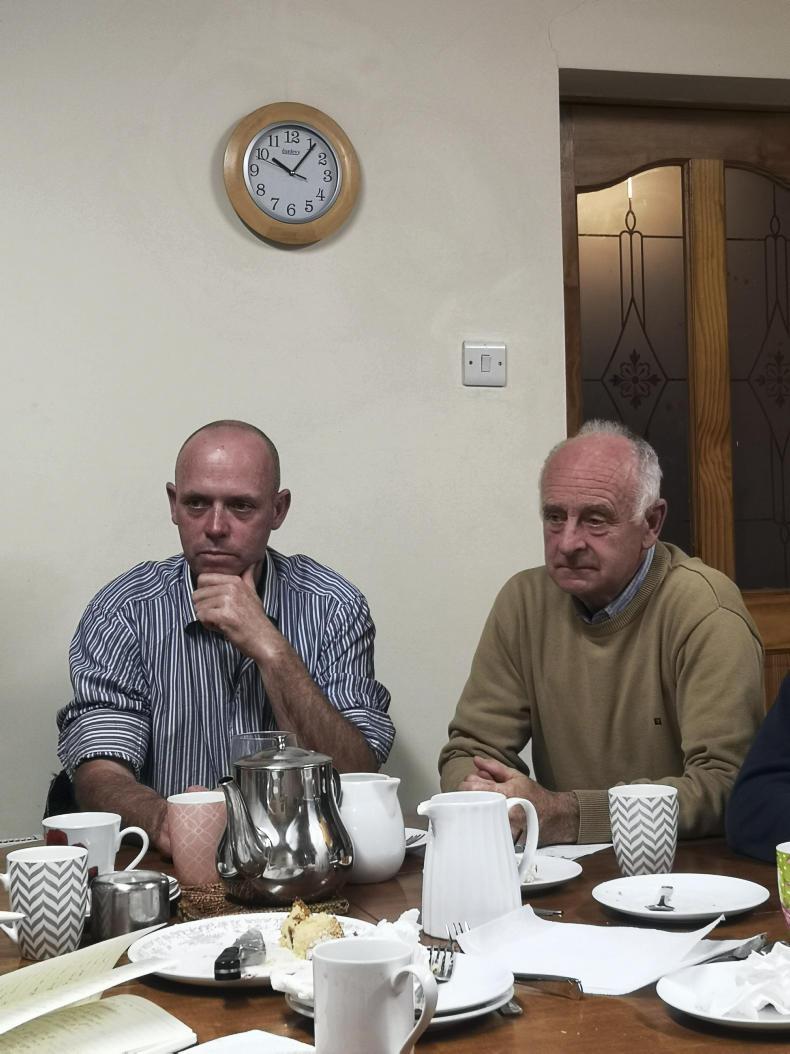
Michael J Moroney and Michael Davoren who farm the Burren
“I was always going to farm. The winterage was a big asset as we could keep cattle there from October to April. I did the Green Cert and started farming in my own right on the winterage. Then when 45ac that we rented came up for sale, we bought it. That confirmed my decision to go farming because having the extra land meant we could expand.” The winterage is now used to graze in-calf heifers over the winter.
Getting the call
Michael Collins is also a native of Kilnaboy and is married to Margaret. He left school early and worked as a trainee mechanic in Ennis for 18 months.
“Then I got the call to come home, and to be honest, I was glad to get it. Dad was getting on and needed help with the dairy cows and suckler herd. So I started farming and did the 300 hours Green Cert part time in Ennis.
“Dad was also into sheep and we kept 130 ewes. Vaughan’s in Kilfenora was a great sheep mart but sadly it’s gone now. There was also a big butcher trade.
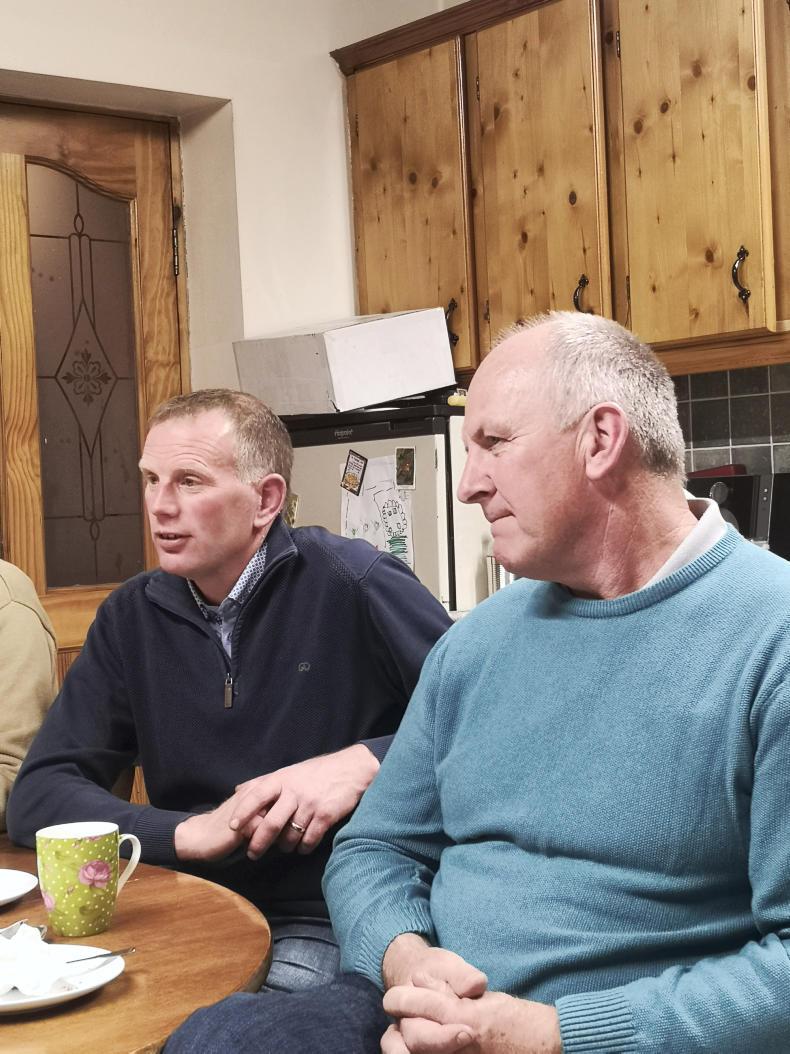
Michael Collins and John Marrinan.
"The only thing I liked about sheep was shearing them. I gradually got out of them in favour of more sucklers. The €300 grant for the suckler cow was a big boost.
I lost 10 cows last year and thankfully we are clear now
“So too was the REPS which was worth €6,200 to us at the time. My parents couldn’t believe you could get this sort of money without selling anything.”
Over the years, Michael has expanded his suckler herd to 42 cows. Weanlings are kept over one winter and are sold the following March. TB is an issue in the Burren and hits about once every five years. “I lost 10 cows last year and thankfully we are clear now but we are trying to find answers.”
Homeward bound
It’s about seven years since Frances Nagle’s parents, Mary and Jim, asked if she wanted to farm some winterage and green land on her own account. “I had been in Australia and New Zealand, but I was well home and farming alongside them. There’s five in the family and we were all well-taught and trained by our parents. They farmed sucklers and sheep and I live nearby so I can always help them out.”
I like to think I’ve earned respect as a farmer in my own right from my neighbours
Frances herself farms continental sucklers crossed with a Limousin bull. “I like to think I’ve earned respect as a farmer in my own right from my neighbours.
"I go to the mart and do the same day-to-day work as everyone else. And I like it, in particuar I really enjoy working with sheep.”
Frances also works in tourism in north Clare.
Get me out of here
John Marrinan makes no bones about it – he hated school and dodged it as much as he could.
He made one exception and that was when his primary school Carron beat Lisdoonvarna to win the Clare schools football title for the third time in a row.
“This was the early 1980s and my parents did their best to keep me in school but it was not happening. I loved farming with my dad Jamesy and Uncle Mickey and ours was a suckler and stores to beef operation.”
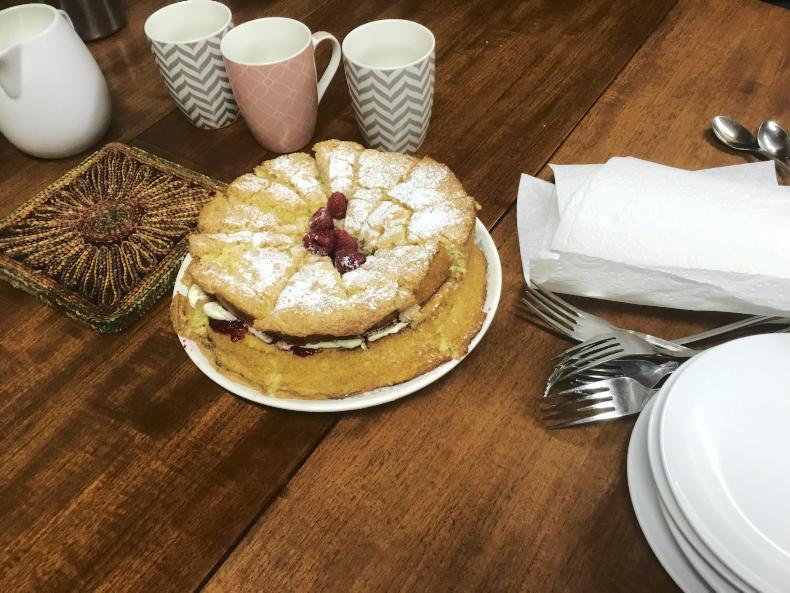
Let there be sponge cake round the kitchen table in Clare.
But before settling down to farm full time, John went working with O’Connor Engineering in Tubber. The business specialises in slurry tanks, side spreaders and toppers and is still going strong. “They were good employers and I worked there as a spray painter and really enjoyed it.”
Fierce restrictions
In 2002 his parents transferred an out-farm to John and in 2008 his uncle Mickey died leaving him the family farm which ran to 600ac. The farm had every type of land and 500ac were classed as a Special Area of Conservation (SAC).
“There were fierce restrictions on the SAC land and the sanctions meant I couldn’t do anything with it.
"Good land that could be brought back into production was closed in.
"I couldn’t touch the fields. Couldn’t improve them and there was no compensation for these restrictions.”
Into the future
There’s no doubt but that the BurrenLIFE project and the Burren Farming for Conservation Programme (BFCP) have sustained the future of many of their 400 farmer members.
The objective of the BurrenLIFE project is to develop a model for the sustainable agricultural management of the Burren habitats.
The BFCP was launched in 2010 and ran until 2015, and it built further on the BurrenLIFE project, providing payments of over €1m a year to farmers.
But with thousands of years of history behind it what will farming on the Burren look like in future? For Michael Davoren the path is clear and is at EU level.
If they are serious about family farming, they have to back it
“When this round of CAP is negotiated, the farm organisations need to come together to do a cost benefit analysis on all farming enterprises. They need to prove to the EU that it cannot continue to trade cheap food into the EU.
“If they are serious about family farming, they have to back it. If we run down food production capability in Europe it won’t be easily replaced. Put a margin into farming for farmers and there is a future to it,” he says.
Keep jobs in local areas
For Frances Nagle, the biggest change is the move to part-time farming with up to 80% of farmers in some parts now part time.
“Holding jobs in places such as Doolin, Lahinch, Lisdoonvarna and Ennis is important not just for the income they give, but to protect mental health and keep friendships going.
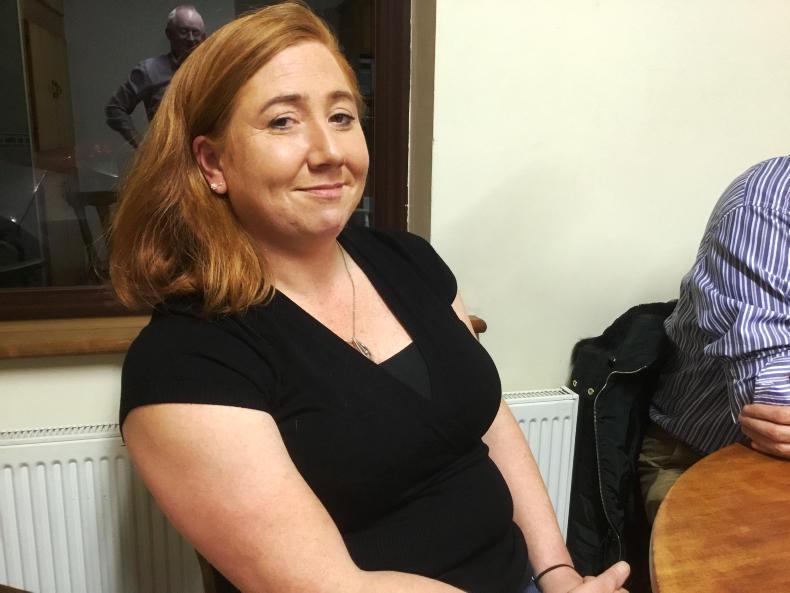
Frances Nagle who farms the Burren and also works in tourism.
"Having an off-farm job is important to me. It keeps you out among the people.
John Marrinan wonders if the next generation will be prepared to work while keeping farms going. “I don’t think so,” he says.
“But I have two daughters and they share my passion for our farm. The Burren programmes have energised me and farmers younger than me.
"However, farming in the Burren can’t be mechanised and there’s only so much one man or woman can do.”
Farming for conservation
John Marrinan joined the BFCP in 2010 – this was the successor to the BurrenLIFE pilot programme. He says it’s the greatest thing to have happened to farming in the Burren in years.
“Long ago people had a better handle on the management of the Burren and we are now copying what they did. I get a great kick out of what we are doing now. Walls are rebuilt. Gates are hung. Water is connected. Plots are managed and we are trying to get the scrub under control.
“My wife Jeannette and I have two young daughters, Erica and Emily, and if there’s any hope of one of them going farming then the place needs to be right. This programme has brought our farm back to working conditions.”
However, John says there are still problems with the spread of scrub and control of it is a big issue. John has 50 suckler cows and 20 springers and says this stocking level will keep the winterage right.
BurrenLIFE showed the way
Michael J Moroney believes there is a future for farmers on the Burren. “We can’t all be like New Zealand. BurrenLIFE showed us the way land should be farmed. It’s made a huge difference. I’m a mile from the road before I get to the farm so the new tracks, gates and walls have created five divisions on the farm. Modern technology on an ancient landscape helps us manage livestock in winter as if it was summer.”
You never know what’s coming down the road and I hope Brexit won’t hit funding for BurrenLIFE
Michael hopes the dairy culture continues as he says it provides security for those who keep cows and sucklers or drystock.. “You never know what’s coming down the road and I hope Brexit won’t hit funding for BurrenLIFE. For the last round the money was pulled from everywhere.”
Michael Collins and his wife Margaret have four children, and like the Davorens, there is a new generation going farming but it will be part time. “I wouldn’t let them go full-time farming. They really want to stay around and there’s lots of their friends around the place as well.
Tourism can work for farmers
All the farmers recognised the importance of tourism to the Burren and west Clare. Some felt it was high time farmers got involved in the sector. John Marrinan was in Airbnb and it was popular but intermittent broadband let them down. Now he is one of a group of three farmers taking Americans on tours of their farms in the Burren.
We do two tours a week from July to November
“We take 16 each time on a 4km walk, and that includes tea and treats in an old cottage. We do two tours a week from July to November and it’s a great boost to our family income. With tourism you have two choice; either curse it or step right into it.”
None of those around the table felt that crime was a concern and while small post offices in Fenor, Doolin, Kilfenora and Carron were closed other services were intact.
Past and present
working together
Michael Davoren takes us back to the eighth century when livestock were kept on the Burren to feed the local tribe.
Practices evolved to meet the market needs and those practices continued century after century until things changed dramatically with a decision of the European Parliament in 1991.
We couldn’t cut scrub, couldn’t spread chemical fertiliser, couldn’t use herbicides, we faced serious restrictions on the winterage
Its decision was that 12.5% of each country was to be designated as Special Areas of Conservation (SAC). Implementation was to start in 1993.
“It was a desktop exercise by Dúchas who decided to de-stock west Clare in a one-size-fits-all exercise.”
“We couldn’t cut scrub, couldn’t spread chemical fertiliser, couldn’t use herbicides, we faced serious restrictions on the winterage, including not being able to feed silage on it in winter. Our stocking rate was cut by 20%. It was a nightmare,” says Michael.
“They ringfenced the Burren against all uses. It was all about re-wilding and wilderness creation. It’s no wonder all hell broke loose,” adds John Marrinan.
BurrenLIFE
It was against this background that ordinary farmers and the Burren IFA began to fight back. Dr Brendan Dunford was a Walsh Fellowship winner and had written his PhD thesis on the impact of farming on the natural heritage of the Burren. In it, Brendan showed that farming practices were not damaging biodiversity on the Burren, they were in fact the very reason for its continued existence.
The programme has just shy of 400 farmers and covers 23,000ha
A steering group made up of the National Parks and Wildlife Service, Teagasc and Burren IFA was established in 2005 and funding of €2.3m was secured from DG Environment to run a five-year scheme. This was followed by the Burren Farming for Conservation Programme 2010-16.
The programme has just shy of 400 farmers and covers 23,000ha. Farmers receive a result-based payment where each field is scored for biodiversity with a score of 10 attracting €180/ha and a score of five €75/ha.
“It’s very hard to get and hold on to a score of 10 but still average payments are €7,500 per farm. There’s a farm plan and inspections, but no penalities. It’s easy to understand. Central to it all is the suckler cow because of the importance of grazing on the Burren and the biodiversity she’s responsible for. It works and we are proud to have developed a template that is now used across the EU to create locally based schemes.”
This Round the Kitchen Table gathering is in the heart of the Burren, at the home of Michael and Liz Davoren. Records show the family can trace their roots in the townland of Kilcorney back to the 14th century. They are happy their son Gregory, is the latest generation of the family to farm on the Burren.
As an only son, Michael was destined to go farming and after doing his Junior Cert that’s what he did. Theirs was a dairy and suckler farm but with limited green land his mother got out of dairying. “We had 20 suckler cows and they provided a good income. Their calves were reared to as near finishing as possible and sold as forward stores.”

Michael Davoren and Michael Collins.
When Michael began farming he took on board the best scientific advice of the time. “I bought into the mantra of one more cow to the acre. I bulldozed land and reseeded green land to follow best practice. We got out of sheep and concentrated on sucklers and the premiums kept it all going. But what we did in following all that advice was wrong for the Burren.”
Winterage works for dairying
Michael J Moroney is a native of Kilfenora and is married to Aisling and they have two children Caoimhe and Darragh. He’s a dairy farmer with 90 cows and supplies milk to Kerry. He finishes beef from the dairy herd and has winterage (cattle moved from one grazing ground to another seasonally) on the Burren.

Michael J Moroney and Michael Davoren who farm the Burren
“I was always going to farm. The winterage was a big asset as we could keep cattle there from October to April. I did the Green Cert and started farming in my own right on the winterage. Then when 45ac that we rented came up for sale, we bought it. That confirmed my decision to go farming because having the extra land meant we could expand.” The winterage is now used to graze in-calf heifers over the winter.
Getting the call
Michael Collins is also a native of Kilnaboy and is married to Margaret. He left school early and worked as a trainee mechanic in Ennis for 18 months.
“Then I got the call to come home, and to be honest, I was glad to get it. Dad was getting on and needed help with the dairy cows and suckler herd. So I started farming and did the 300 hours Green Cert part time in Ennis.
“Dad was also into sheep and we kept 130 ewes. Vaughan’s in Kilfenora was a great sheep mart but sadly it’s gone now. There was also a big butcher trade.

Michael Collins and John Marrinan.
"The only thing I liked about sheep was shearing them. I gradually got out of them in favour of more sucklers. The €300 grant for the suckler cow was a big boost.
I lost 10 cows last year and thankfully we are clear now
“So too was the REPS which was worth €6,200 to us at the time. My parents couldn’t believe you could get this sort of money without selling anything.”
Over the years, Michael has expanded his suckler herd to 42 cows. Weanlings are kept over one winter and are sold the following March. TB is an issue in the Burren and hits about once every five years. “I lost 10 cows last year and thankfully we are clear now but we are trying to find answers.”
Homeward bound
It’s about seven years since Frances Nagle’s parents, Mary and Jim, asked if she wanted to farm some winterage and green land on her own account. “I had been in Australia and New Zealand, but I was well home and farming alongside them. There’s five in the family and we were all well-taught and trained by our parents. They farmed sucklers and sheep and I live nearby so I can always help them out.”
I like to think I’ve earned respect as a farmer in my own right from my neighbours
Frances herself farms continental sucklers crossed with a Limousin bull. “I like to think I’ve earned respect as a farmer in my own right from my neighbours.
"I go to the mart and do the same day-to-day work as everyone else. And I like it, in particuar I really enjoy working with sheep.”
Frances also works in tourism in north Clare.
Get me out of here
John Marrinan makes no bones about it – he hated school and dodged it as much as he could.
He made one exception and that was when his primary school Carron beat Lisdoonvarna to win the Clare schools football title for the third time in a row.
“This was the early 1980s and my parents did their best to keep me in school but it was not happening. I loved farming with my dad Jamesy and Uncle Mickey and ours was a suckler and stores to beef operation.”

Let there be sponge cake round the kitchen table in Clare.
But before settling down to farm full time, John went working with O’Connor Engineering in Tubber. The business specialises in slurry tanks, side spreaders and toppers and is still going strong. “They were good employers and I worked there as a spray painter and really enjoyed it.”
Fierce restrictions
In 2002 his parents transferred an out-farm to John and in 2008 his uncle Mickey died leaving him the family farm which ran to 600ac. The farm had every type of land and 500ac were classed as a Special Area of Conservation (SAC).
“There were fierce restrictions on the SAC land and the sanctions meant I couldn’t do anything with it.
"Good land that could be brought back into production was closed in.
"I couldn’t touch the fields. Couldn’t improve them and there was no compensation for these restrictions.”
Into the future
There’s no doubt but that the BurrenLIFE project and the Burren Farming for Conservation Programme (BFCP) have sustained the future of many of their 400 farmer members.
The objective of the BurrenLIFE project is to develop a model for the sustainable agricultural management of the Burren habitats.
The BFCP was launched in 2010 and ran until 2015, and it built further on the BurrenLIFE project, providing payments of over €1m a year to farmers.
But with thousands of years of history behind it what will farming on the Burren look like in future? For Michael Davoren the path is clear and is at EU level.
If they are serious about family farming, they have to back it
“When this round of CAP is negotiated, the farm organisations need to come together to do a cost benefit analysis on all farming enterprises. They need to prove to the EU that it cannot continue to trade cheap food into the EU.
“If they are serious about family farming, they have to back it. If we run down food production capability in Europe it won’t be easily replaced. Put a margin into farming for farmers and there is a future to it,” he says.
Keep jobs in local areas
For Frances Nagle, the biggest change is the move to part-time farming with up to 80% of farmers in some parts now part time.
“Holding jobs in places such as Doolin, Lahinch, Lisdoonvarna and Ennis is important not just for the income they give, but to protect mental health and keep friendships going.

Frances Nagle who farms the Burren and also works in tourism.
"Having an off-farm job is important to me. It keeps you out among the people.
John Marrinan wonders if the next generation will be prepared to work while keeping farms going. “I don’t think so,” he says.
“But I have two daughters and they share my passion for our farm. The Burren programmes have energised me and farmers younger than me.
"However, farming in the Burren can’t be mechanised and there’s only so much one man or woman can do.”
Farming for conservation
John Marrinan joined the BFCP in 2010 – this was the successor to the BurrenLIFE pilot programme. He says it’s the greatest thing to have happened to farming in the Burren in years.
“Long ago people had a better handle on the management of the Burren and we are now copying what they did. I get a great kick out of what we are doing now. Walls are rebuilt. Gates are hung. Water is connected. Plots are managed and we are trying to get the scrub under control.
“My wife Jeannette and I have two young daughters, Erica and Emily, and if there’s any hope of one of them going farming then the place needs to be right. This programme has brought our farm back to working conditions.”
However, John says there are still problems with the spread of scrub and control of it is a big issue. John has 50 suckler cows and 20 springers and says this stocking level will keep the winterage right.
BurrenLIFE showed the way
Michael J Moroney believes there is a future for farmers on the Burren. “We can’t all be like New Zealand. BurrenLIFE showed us the way land should be farmed. It’s made a huge difference. I’m a mile from the road before I get to the farm so the new tracks, gates and walls have created five divisions on the farm. Modern technology on an ancient landscape helps us manage livestock in winter as if it was summer.”
You never know what’s coming down the road and I hope Brexit won’t hit funding for BurrenLIFE
Michael hopes the dairy culture continues as he says it provides security for those who keep cows and sucklers or drystock.. “You never know what’s coming down the road and I hope Brexit won’t hit funding for BurrenLIFE. For the last round the money was pulled from everywhere.”
Michael Collins and his wife Margaret have four children, and like the Davorens, there is a new generation going farming but it will be part time. “I wouldn’t let them go full-time farming. They really want to stay around and there’s lots of their friends around the place as well.
Tourism can work for farmers
All the farmers recognised the importance of tourism to the Burren and west Clare. Some felt it was high time farmers got involved in the sector. John Marrinan was in Airbnb and it was popular but intermittent broadband let them down. Now he is one of a group of three farmers taking Americans on tours of their farms in the Burren.
We do two tours a week from July to November
“We take 16 each time on a 4km walk, and that includes tea and treats in an old cottage. We do two tours a week from July to November and it’s a great boost to our family income. With tourism you have two choice; either curse it or step right into it.”
None of those around the table felt that crime was a concern and while small post offices in Fenor, Doolin, Kilfenora and Carron were closed other services were intact.
Past and present
working together
Michael Davoren takes us back to the eighth century when livestock were kept on the Burren to feed the local tribe.
Practices evolved to meet the market needs and those practices continued century after century until things changed dramatically with a decision of the European Parliament in 1991.
We couldn’t cut scrub, couldn’t spread chemical fertiliser, couldn’t use herbicides, we faced serious restrictions on the winterage
Its decision was that 12.5% of each country was to be designated as Special Areas of Conservation (SAC). Implementation was to start in 1993.
“It was a desktop exercise by Dúchas who decided to de-stock west Clare in a one-size-fits-all exercise.”
“We couldn’t cut scrub, couldn’t spread chemical fertiliser, couldn’t use herbicides, we faced serious restrictions on the winterage, including not being able to feed silage on it in winter. Our stocking rate was cut by 20%. It was a nightmare,” says Michael.
“They ringfenced the Burren against all uses. It was all about re-wilding and wilderness creation. It’s no wonder all hell broke loose,” adds John Marrinan.
BurrenLIFE
It was against this background that ordinary farmers and the Burren IFA began to fight back. Dr Brendan Dunford was a Walsh Fellowship winner and had written his PhD thesis on the impact of farming on the natural heritage of the Burren. In it, Brendan showed that farming practices were not damaging biodiversity on the Burren, they were in fact the very reason for its continued existence.
The programme has just shy of 400 farmers and covers 23,000ha
A steering group made up of the National Parks and Wildlife Service, Teagasc and Burren IFA was established in 2005 and funding of €2.3m was secured from DG Environment to run a five-year scheme. This was followed by the Burren Farming for Conservation Programme 2010-16.
The programme has just shy of 400 farmers and covers 23,000ha. Farmers receive a result-based payment where each field is scored for biodiversity with a score of 10 attracting €180/ha and a score of five €75/ha.
“It’s very hard to get and hold on to a score of 10 but still average payments are €7,500 per farm. There’s a farm plan and inspections, but no penalities. It’s easy to understand. Central to it all is the suckler cow because of the importance of grazing on the Burren and the biodiversity she’s responsible for. It works and we are proud to have developed a template that is now used across the EU to create locally based schemes.”











 This is a subscriber-only article
This is a subscriber-only article










SHARING OPTIONS: